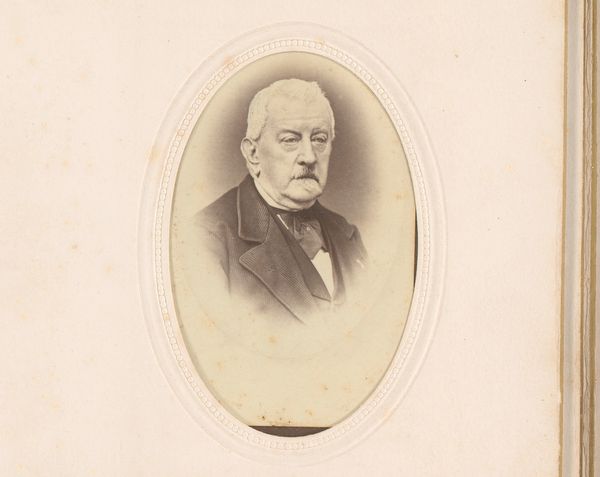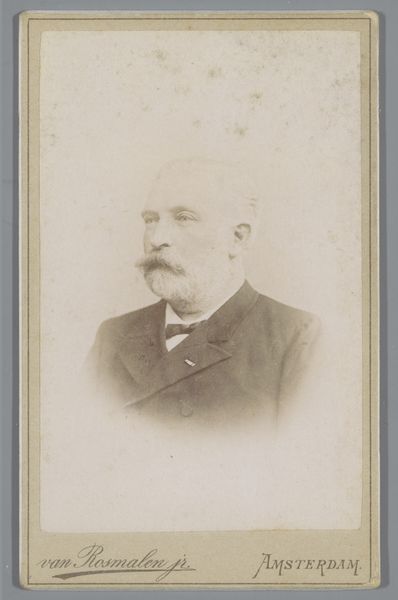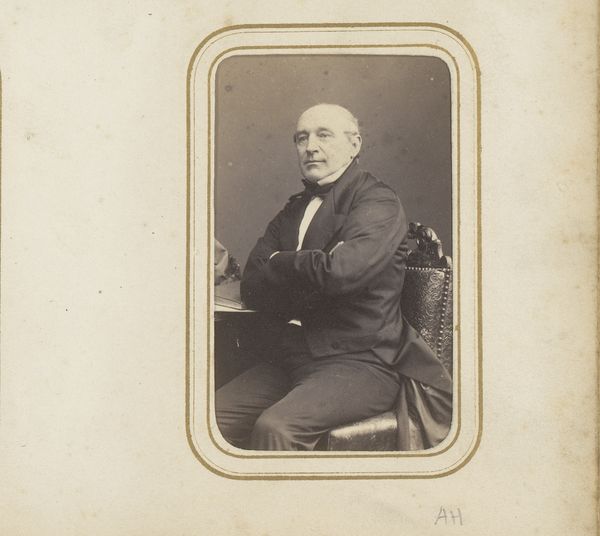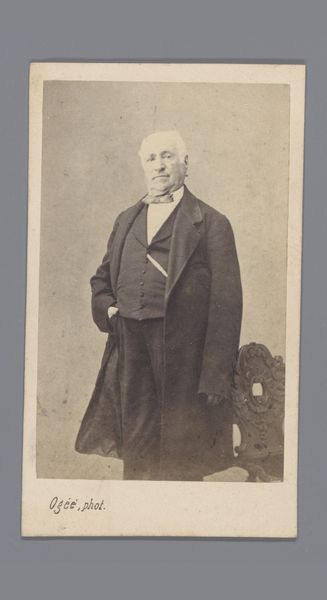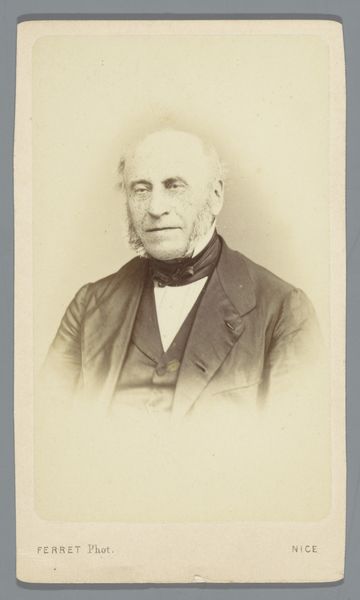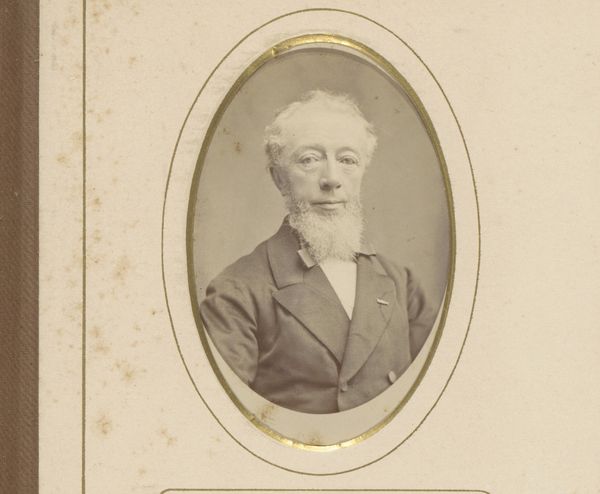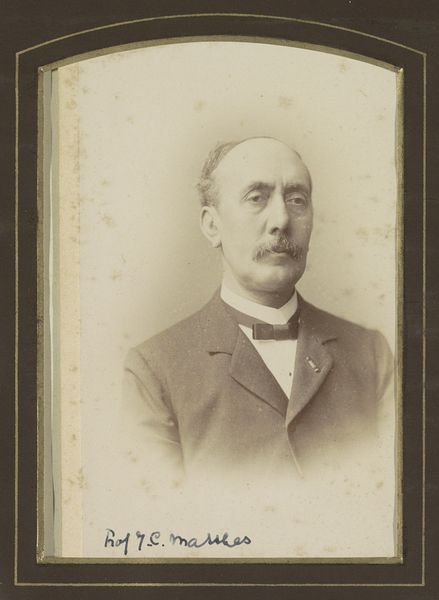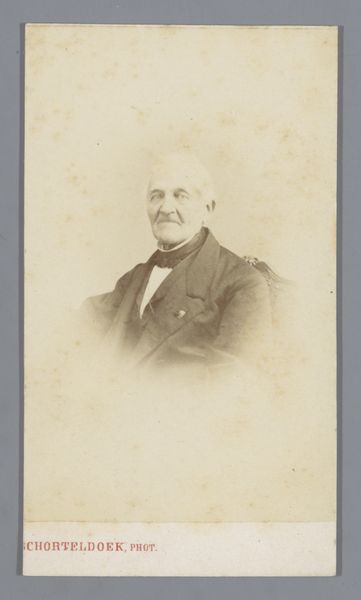
daguerreotype, photography
#
portrait
#
daguerreotype
#
photography
#
realism
Dimensions: height 102 mm, width 64 mm
Copyright: Rijks Museum: Open Domain
Curator: Immediately striking, isn’t it? There’s a stark directness. Editor: There certainly is, almost an arresting quality with its limited tonal range. It’s like looking at a ghost. Curator: In front of us we have a portrait produced sometime between 1891 and 1917 by the studio G.B.H. Niestadt & Zoon, "Portret van een man, aangeduid als Koning", or Portrait of a Man, Referred to as King. It's a daguerreotype, and those early photographic processes could lend a unique character. Editor: Yes, you’re right. The softness contrasts nicely with the sharp focus on the man’s face, creating that strong impression. But calling him ‘King?’ Curator: Well, the title is definitely assigned, not necessarily reflective of the sitter’s reality. Consider how power was presented, even aspired to, through imagery at the time, especially within the emerging middle class. Photographic portraits granted status. Editor: True, the man’s composed expression hints at aspiration, that’s reinforced through the neat arrangement of clothing and slight focal distance that gives off the impression of someone noteworthy; though there is something melancholy lurking around his mouth. The semiotics, the small bow tie, jacket, its buttons are all arranged deliberately and are intended to denote respectability. Curator: And the lighting! Subdued, but just enough to cast those interesting shadows around the eyes. That was very typical of the period. The public perception and accessibility of royalty and public figures grew due to these sorts of readily produced realistic photos. It changed visual culture significantly. Editor: Agreed, it has all of those typical characteristics. And the lack of artifice helps—no painterly smoothing-over. His flaws are evident, adding to that sense of real presence. And you can see so much subtle variation in his white facial hair; the portrait really captures its delicacy. Curator: Indeed, these daguerreotypes were powerful social objects, promising realism. I think it prompts questions about the changing social fabric and the democratisation of the image. Editor: I am glad to notice something new each time I cast my eyes across its visage. Thank you, I appreciated your insight! Curator: Likewise! Considering the context does deepen one's appreciation, even of what initially seem simple photographic works.
Comments
No comments
Be the first to comment and join the conversation on the ultimate creative platform.
